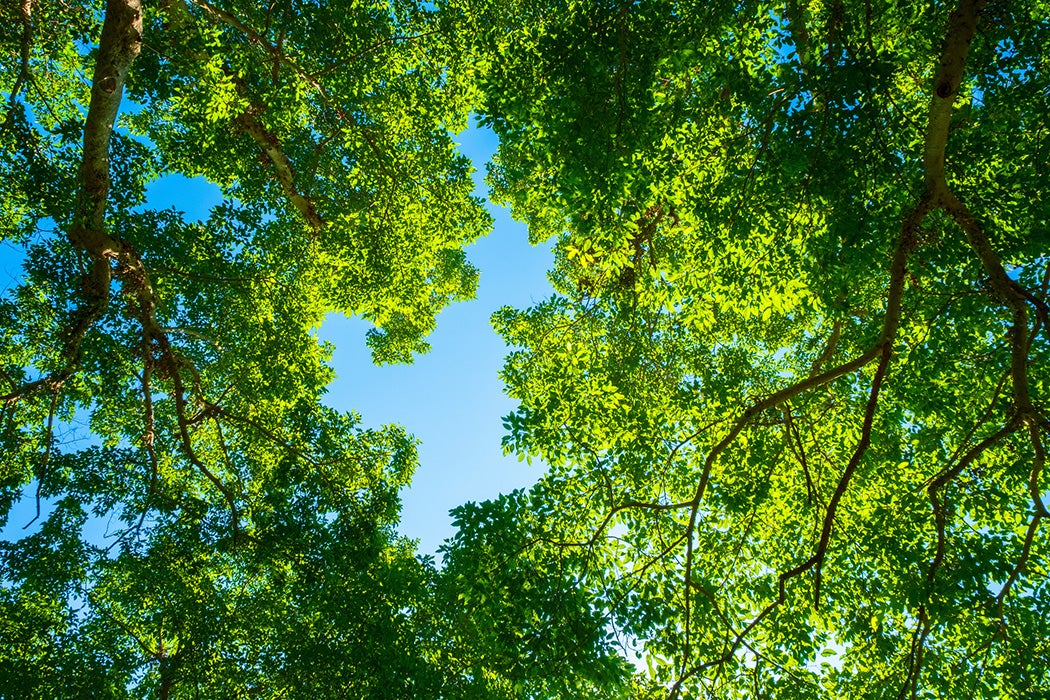A canopy gap, at its most basic, is a hole in the forest land cover, often the result of a fallen tree or windstorm. But these gaps in the forest, usually created by natural processes, can also lead to new life.
In this study by T.C. Whitmore, the author defines what a tree gap is and the special place it has in the forest, showing that sometimes what is missing can lead to a deeper understanding of the forest.
Gaps can be formed in a number of ways: when trees fall or die, or during weather events like wind storms or hurricanes. Forest management techniques can create human-made gaps as well. These gaps are designed to mimic the natural disturbance regime in forests, with the hopes to have the same end goal: regeneration, or the growth of new trees.
The size of the gap matters, and can determine which species return. A small gap will let in less sunlight, and allow the growth of what are termed climax species. A large gap, filled with sunlight, will promote the growth of pioneer species.
Often these pioneer species may not last, as climax or opportunist species outcompete them. Climax species are species that late-successional species, meaning they persist within the forest community. Even though pioneer species usually do not make it into the canopy, their place in this cycle is valuable to encouraging diversity and habitat building within the forest.
Gap formation, and therefore the gaps themselves, vary from ecosystem to ecosystem. Whitmore cites forests in Papua New Guinea, which experience fires, volcanos, and cyclones—all of which create huge gaps. Other forests, such as those in Borneo experience much smaller events, which leads to more shade-tolerant species.
Get Our Weekly Digest
Gaps have always occurred in forests, and there is far more to discover, including information that could influence understanding of forest processes, but more research is needed.
Writes Whitmore, “Gaps are heterogeneous. They may contain upturned root-plates that expose mineral soil and form mounds, as well as areas of fallen branches, twigs, and leaves. Continental European authors have introduced the medieval French term ‘chablis’ to signify this heterogeneity and diversity, feeling that ‘gap’ has too simple a connotation.”
You Might Like This Story, Too
The Mysteries of Crown Shyness
Support JSTOR Daily! Join our new membership program on Patreon today.








